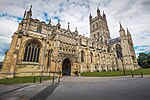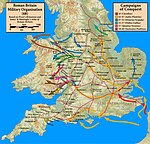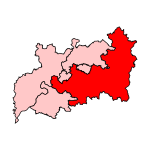Hyatt House, Gloucester
Commons category link is locally definedGrade II listed buildings in GloucestershireHyett familyUnited Kingdom building and structure stubsWestgate, Gloucester

Hyatt House, or Hyett House, is a grade II listed building at 91 Westgate Street in the English city of Gloucester. The building is of a timber frame with stone and was probably constructed in the 16th century. According to a plaque on the building, an earlier dwelling stood on the site at least as early as 1455. The current façade was probably constructed by Nicholas Hyett (1709–1777), a local lawyer and justice of the peace. In 1988 the building was converted to flats by Avondown Housing Association and Gloucester City Council.
Excerpt from the Wikipedia article Hyatt House, Gloucester (License: CC BY-SA 3.0, Authors, Images).Hyatt House, Gloucester
Westgate Street, Gloucester Kingsholm
Geographical coordinates (GPS) Address External links Nearby Places Show on map
Geographical coordinates (GPS)
| Latitude | Longitude |
|---|---|
| N 51.86707 ° | E -2.24981 ° |
Address
Westgate Street 89-91
GL1 2PU Gloucester, Kingsholm
England, United Kingdom
Open on Google Maps










